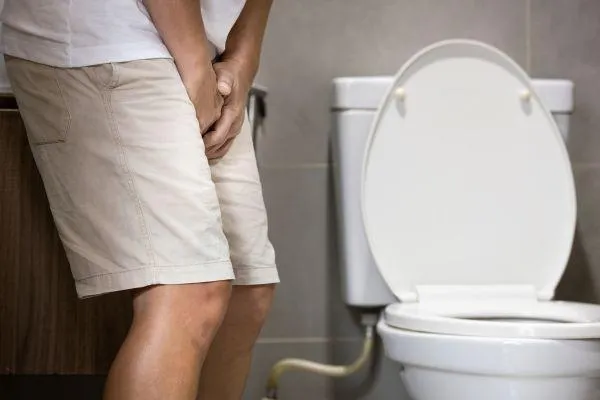
Managing Urge Incontinence: Tips and Techniques for Better Bladder Control
Have you ever experienced that sudden, overwhelming urge to use the bathroom, only to worry you won’t make it in time? If so, you’re not alone. Urge incontinence, a condition where the bladder contracts unexpectedly, causing involuntary urine leakage, can be both frustrating and disruptive. Fortunately, there are practical strategies and physiotherapy techniques that can help you gain better control and reduce those intense urges.
At Proactive Physiotherapy, we’re here to guide you through effective ways to manage urge incontinence so you can live more comfortably and confidently. Let’s explore some useful tips and techniques.
Understanding Urge Incontinence
First, let’s break down what urge incontinence is. It’s characterised by a sudden, intense need to urinate, often followed by involuntary leakage. This happens because the bladder muscles contract forcefully, even when the bladder isn’t full. Common triggers include hearing running water, feeling cold, or simply getting close to the bathroom.
Now, onto the strategies that can make a real difference.
1. Bladder Training Techniques
Bladder training is one of the most effective ways to manage urge incontinence. It involves gradually increasing the time between bathroom visits to improve bladder control. Here’s how to get started:
Timed Voiding: Begin by setting a schedule to use the bathroom at regular intervals, even if you don’t feel the urge. Start with intervals that feel manageable, like every hour, and gradually increase the time by 15-minute increments.
Delay the Urge: When you feel the sudden need to urinate, try to hold off for a few minutes before going to the bathroom. This helps train your bladder to become more resilient. Distract yourself by taking deep breaths, doing a mental puzzle, or engaging in a calming activity.
Over time, these techniques can help you gain more control over your bladder, reducing the frequency and urgency of bathroom visits.
2. Pelvic Floor Exercises
Strengthening the pelvic floor muscles is another key component in managing urge incontinence. These muscles support the bladder and help control urine flow. Here’s how to engage them effectively:
Pelvic Floor Muscle Exercises (Kegels): Sit comfortably and imagine you’re trying to stop the flow of urine. Squeeze and lift your pelvic floor muscles, hold for a few seconds, and then release. Aim for several repetitions throughout the day. The goal is to build strength and endurance over time.
Pelvic floor exercises can be incredibly effective, but it’s important to make sure you’re doing them correctly. Physiotherapy sessions can guide you in targeting the right muscles and developing a routine that fits your needs.
3. Mindful Fluid Intake
While staying hydrated is important, drinking large amounts of fluid in one go can overwhelm your bladder. Spread your fluid intake throughout the day and avoid drinking too much in the evening if you’re dealing with nighttime urgency. Additionally, consider limiting bladder irritants like caffeine, alcohol, and carbonated drinks, which can make urge incontinence worse.
4. Urge Suppression Techniques
When that intense urge hits, there are techniques you can use to calm the bladder:
Deep Breathing: Take slow, deep breaths to relax your body and bladder muscles. Focus on breathing from your diaphragm, not just your chest.
Pelvic Floor Muscle Engagement: When you feel the urge, do a few quick, strong pelvic floor contractions. This can help signal your bladder to calm down.
Distract Your Mind: Engaging your brain in a different activity can help reduce the sense of urgency. Count backward from 100, recite the lyrics to a favourite song, or do a simple mental puzzle.
5. Lifestyle Adjustments
Incorporating small changes into your daily routine can have a big impact on managing urge incontinence:
Keep a Bladder Diary: Track how often you go to the bathroom, what you drink, and any triggers for urgency. This can help you identify patterns and work on targeted solutions.
Maintain a Healthy Weight: Extra weight can put pressure on the bladder, so weight management can be beneficial for bladder control.
Stay Active: Regular physical activity can improve overall muscle tone, including the muscles that support the bladder.
How Physiotherapy Can Help
At Proactive Physiotherapy, we offer personalised programs to help manage urge incontinence effectively. This includes guided pelvic floor exercises, bladder training support, and education on lifestyle modifications. Our goal is to equip you with the skills and techniques to improve your bladder control and enhance your quality of life.
Take Back Control
Urge incontinence can feel overwhelming, but with the right strategies and support, you can make meaningful progress. By incorporating bladder training, strengthening your pelvic floor, and adopting helpful lifestyle habits, you’ll be on your way to better bladder control.
If you’re ready to explore how physiotherapy can help manage urge incontinence, don’t hesitate to reach out. Together, we can develop a plan that works for you and helps you feel more confident and in control.
Stay strong and take care,
The Proactive Physiotherapy Team



